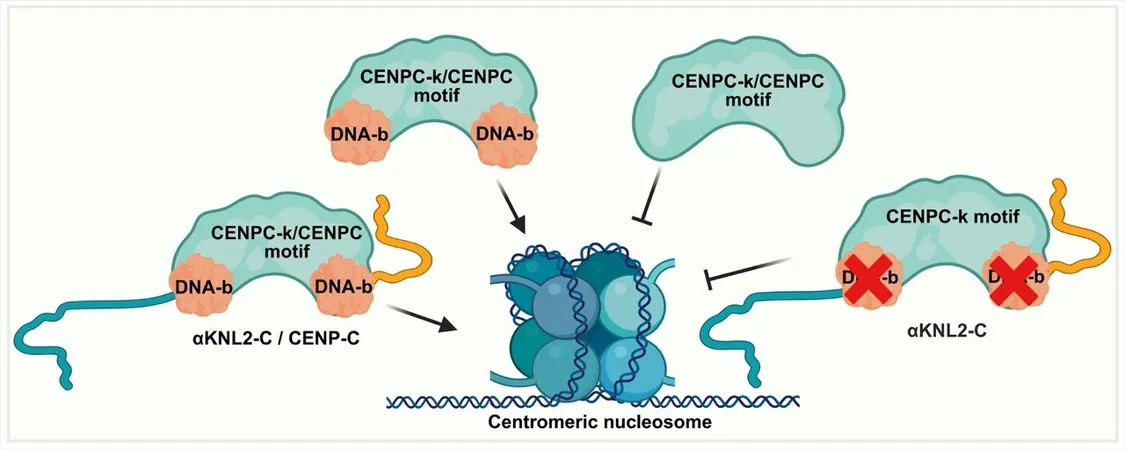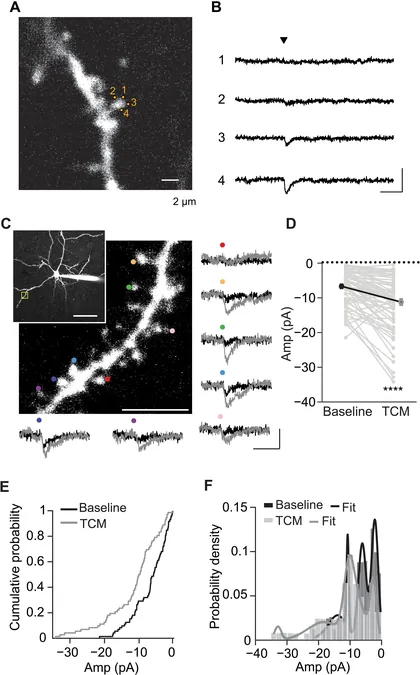
Unlocking the Secrets of Cell Division: How KNL2 and CENP-C Proteins Bind to Centromeres
2025-01-07
Author: Siti
A Groundbreaking Study
A groundbreaking study has unveiled the pivotal role of two vital proteins in the intricate process of cell division. Conducted by an international team led by the Leibniz Institute of Plant Genetics and Crop Plant Research (IPK) and using the model organism Arabidopsis thaliana, this research focuses on how the proteins KNL2 and CENP-C 'dock' to the essential structure known as the centromere. Their findings were recently published in the prestigious journal Nucleic Acids Research.
The Importance of Centromeres
The centromere is a specialized region on chromosomes where spindle fibers attach during both mitotic and meiotic cell divisions. This attachment is crucial for the accurate segregation of sister chromatids, ensuring that each daughter cell inherits the correct amount of genetic information. Composed of centromeric DNA and a multiprotein assembly called the kinetochore, the centromere plays a vital role in maintaining genome stability and facilitating the proper expression of eukaryotic genes.
Key Findings About KNL2 and CENP-C
In their investigation, the researchers found that KNL2 and CENP-C dock onto centromeric DNA in a manner reminiscent of a 'lock and key' mechanism. However, they discovered that previously recognized motifs known as CENPC-k/CENPC were insufficient on their own to establish a firm connection with the centromere; these motifs can only initially recognize the centromere.
"What we found is that additional so-called DNA-binding regions, situated adjacent to these known motifs, are critical to forming a stable connection," explains Dr. Inna Lermontova, leader of the Kinetochore Biology research group at IPK.
Surya Prakash Yalagapati, the study's lead author, adds, "These new insights into the binding regions are vital for understanding how these proteins interact with the centromeric DNA, which is crucial for the correct functioning of cell division."
Broader Implications
The implications of this research extend beyond the immediate understanding of cellular mechanisms. "Our findings deepen our understanding of centromere architecture and pave the way for advancements in synthetic biology and chromosome engineering," Dr. Lermontova continues.
Impact on Agriculture
Notably, this research holds significant potential for the agricultural sector. By targeting proteins that can modify centromere chromatin structures, scientists could enhance plant breeding techniques, leading to the expedited production of double-haploid lines. This advancement could dramatically accelerate the breeding process and improve crop yields, addressing the global challenge of food security.
Conclusion
As scientists continue to unravel the mysteries of cell division, the insights gained from this study highlight how fundamental research can lead to practical applications that may revolutionize agriculture and biotechnology in the years to come. Stay tuned for more developments in this fascinating field!



 Brasil (PT)
Brasil (PT)
 Canada (EN)
Canada (EN)
 Chile (ES)
Chile (ES)
 Česko (CS)
Česko (CS)
 대한민국 (KO)
대한민국 (KO)
 España (ES)
España (ES)
 France (FR)
France (FR)
 Hong Kong (EN)
Hong Kong (EN)
 Italia (IT)
Italia (IT)
 日本 (JA)
日本 (JA)
 Magyarország (HU)
Magyarország (HU)
 Norge (NO)
Norge (NO)
 Polska (PL)
Polska (PL)
 Schweiz (DE)
Schweiz (DE)
 Singapore (EN)
Singapore (EN)
 Sverige (SV)
Sverige (SV)
 Suomi (FI)
Suomi (FI)
 Türkiye (TR)
Türkiye (TR)
 الإمارات العربية المتحدة (AR)
الإمارات العربية المتحدة (AR)